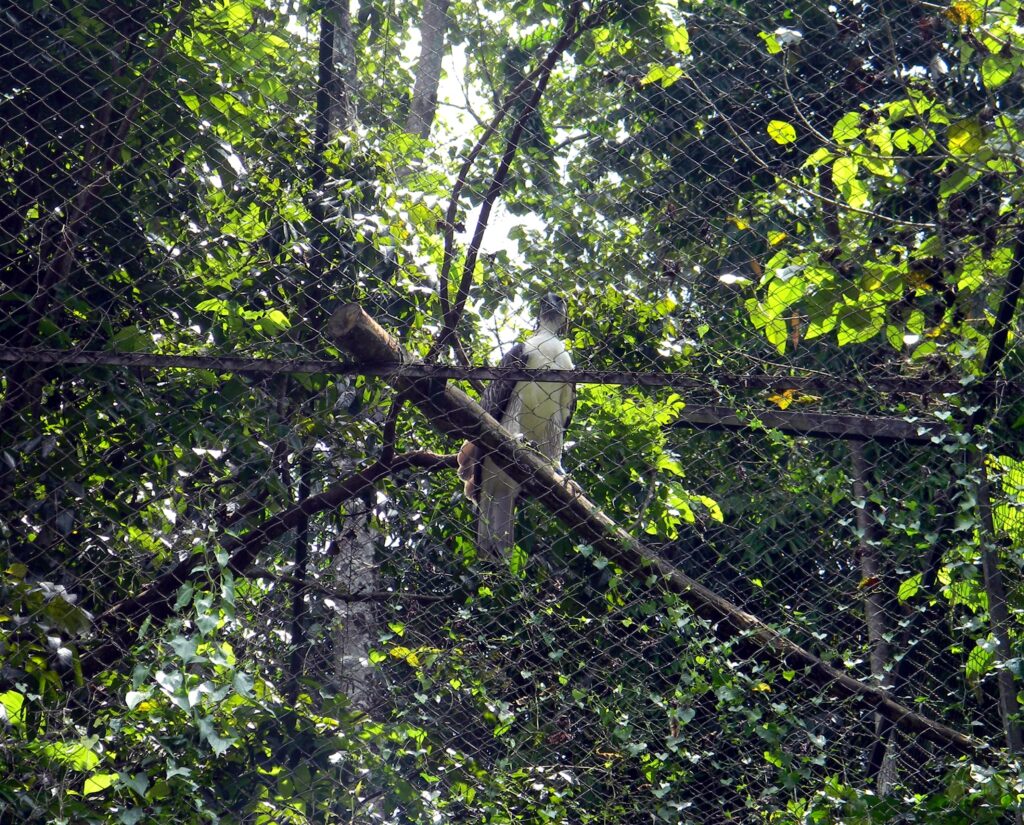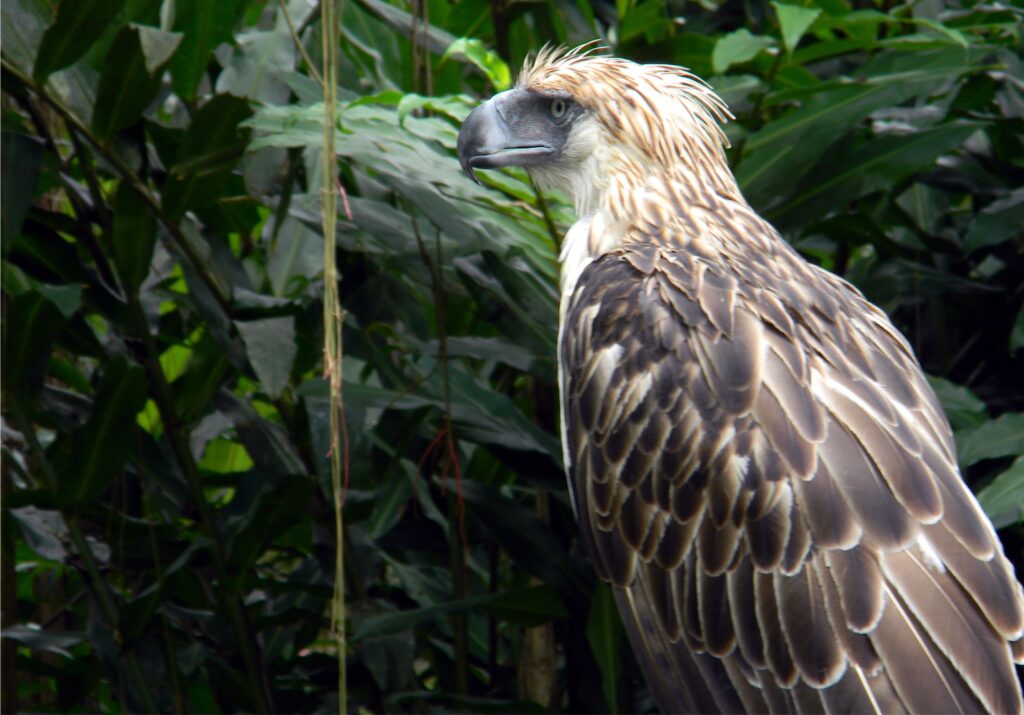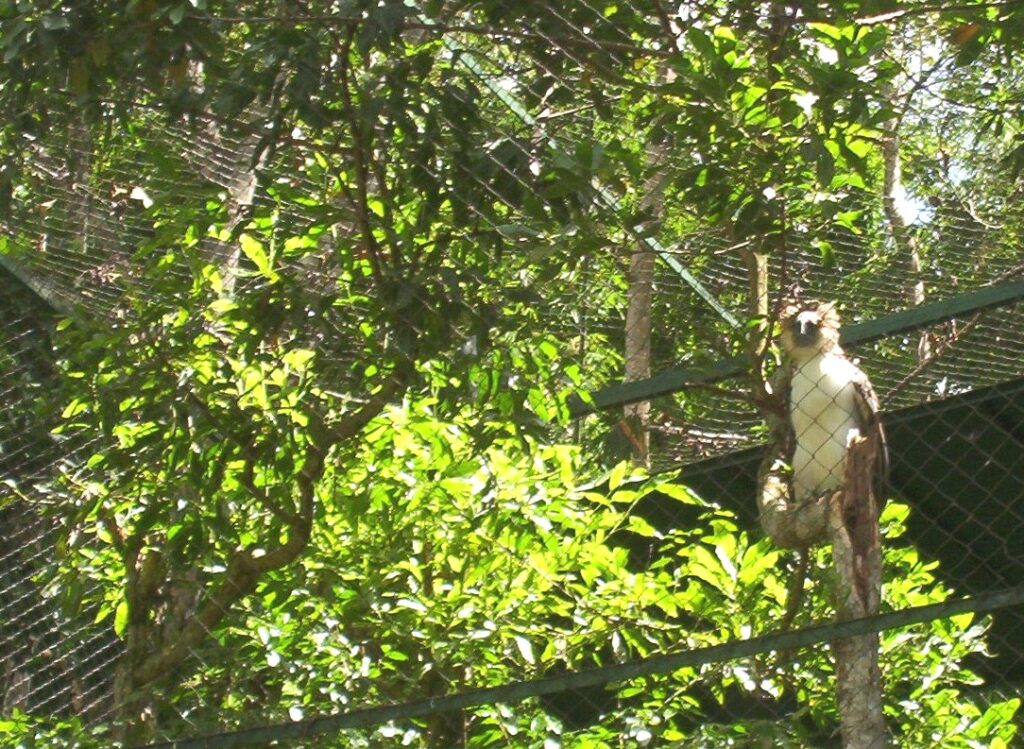Text and Photos by Henrylito D. Tacio
“When the last eagle dies, it shall be the sign of the worst yet to come: The death of our environment,” deplores Dennis Salvador, the executive director of the Philippine Eagle Foundation (PEF), a non-profit organization that has worked for more than 30 years in conserving the species.
With those words, Salvador seems to give a hint as to why those 121 native trees in Mounts Macabol-Alikoson Conservation Area should not be cut. Aside from being classified as an “environmentally critical area,” it is also reported to be a nesting site of the endangered Philippine eagle.
The dictionary defines a nesting site as “a place chosen by a bird for building its nest and laying eggs.” The female Philippine eagle lays only one egg every two years, according to PEF. Both parents alternately incubate the egg for about 60 days, although the female spends more time incubating while the male hunts.
Upon hatching, the eaglet remains in the nest for about 5.5 months. Once it fledges, the parents will continue to look after the young eagle for as long as 17-18 months, teaching it how to fly, hunt, and survive on its own. The young eagle matures in about six years.
“Our data suggests more than 90% of juvenile eagles die before they reach maturity,” discloses Salvador. “A large part of this is caused by humans. Eagles were shot, trapped, and hunted.”
But the biggest threat comes from denuding the country’s forest cover. Citing data from the environment department, Salvador was quoted by a national paper as saying that 90% of the forest cover in the country had been denuded due to human activities.
Emmanuel Piñol, former head of the Mindanao Development Authority, said that only 6% of the country’s total forest cover remains today. “There is an impending disaster waiting for the next generation of Filipinos if we do not do something now,” he pointed out.
“Deforestation is terrible,” deplored Salvador, who was named one of the Ten Outstanding Young Men in 2000 for wildlife conservation. “The Philippine eagle has become a critically endangered species because the loss of the forest has made it lose its natural habitat.”
“In each territory, the eagles are faithful to their nests and they like to live in large and old growth trees,” Salvador said. “Unfortunately, based on deforestation data since the early 1900s, when nearly everything was green, now we are left with few old growth forests.”
Studies conducted by the UN Food and Agriculture Organization said that a pair of Philippine eagles needs at least 7,000 to 13,000 hectares of forest as a nesting territory. “If Filipinos don’t get their act together for the cause of the endangered bird, it shall be doomed to die,” Salvador says.
The PEF operates the Philippine Eagle Center, located in a far-flung area in Malagos of Calinan District in Davao City. It takes almost an hour to travel from the heart of the city to the center, where visitors get to encounter Philippine eagles placed in cages.
Primarily a research facility, the Philippine Eagle Center is nestled at the rolling foothills of Mount Apo, the country’s highest peak. Several Philippine eagles have been raised as part of the foundation’s breeding program. Most of them are being induced to breed in captivity.
In the past, the Philippine eagles can be found in the forests and mountains of the country’s three main islands: Luzon (mostly over in the forests of Sierra Madre), Visayas (particularly in Samar and Leyte), and in Mindanao.
In Mindanao, most of the remaining forests can be found in Agusan del Sur, Surigao del Sur, and Bukidnon, according to the Forest Management Bureau (FMB) of the Department of Environment and Natural Resources (DENR). The provinces with the least forest cover include Camiguin and Guimaras.
“The Philippine eagle’s presence in the forests is intrinsically connected to the web of life and resonates in the everyday lives of our brethren katutubos,” said Environment Secretary Roy A. Cimatu, referring to indigenous people’s groups.
The Swiss-based International Union for the Conservation of Nature and Natural Resources has declared the Philippine eagle as “critically endangered.” According to PEF, an estimated number of only 400 pairs are left in the wild.
The estimation came from a formula created by science experts. The formula is based on the eagle’s nesting density in the Philippine forests.
“We do not have a record of their exact number because we do not have the means to monitor every head,” admitted Maria Lourdes Almeda, ecosystems research specialist of DENR’s Biodiversity Management Bureau (BMB) and Philippine eagle conservation focal person. “We have attached global positioning system tracking devices to the birds to monitor where they are and their forest habitats, but some of the gadgets fall off after a while because they are very much mobile.”
Salvador said that if the old breeding pairs of Philippine eagles in the wild are not being replaced, it is more likely that the whole Philippine eagle population could suddenly collapse.
“Before we know it, we’d probably lose the Philippine eagle. We’ll have a national bird that doesn’t exist,” Salvador warned.
The Philippine eagle is second only to the Madagascar sea eagle in rarity. In size, it beats the American bald eagle; it is the world’s second-largest – after the Harpy eagle of Central and South America.
This bird of prey was first discovered in 1896 by English naturalist John Whitehead in Samar. He first called it the monkey-eating eagle because he thought it fed primarily on monkeys and gave it the scientific name, Pithecophaga jefferyi. The scientific name came from two Greek words: pitekos (monkey) and phagien (to eat). Jefferyi was the discoverer’s tribute to his father, Jeffrey, who funded his expedition.
In 1978, the old name was dropped and given its present name through Presidential Decree No. 1732 after it was learned that monkeys comprise an insignificant portion of the bird’s diet, which consists mostly of flying lemurs, civet cats, bats, rodents, and snakes.
A majestic bird, the Philippine eagle, stands a meter high, weighs anywhere from four to seven kilograms, and has a grip three times the strength of the strongest man on earth, according to PEF.
With a wingspan of nearly seven feet and a top speed of 80 kilometers per hour, the Philippine eagle can gracefully swoop down on unsuspecting prey and carry it off without breaking flight.
“You cannot deny how charismatic the Philippine eagle is, just by looking at its enormous wings and its incredible flight,” Almeda said.
Unlike men, Philippine eagles are monogamous. Once it has selected a partner, it is for life. As Almeda puts it: “They teach us to be loyal, which they say in the vernacular as ‘May forever ang mga Philippine eagle.’ However, females can be very aggressive towards males if they dislike them.”
Efforts to save the Philippine eagles started in 1965 by Jesus A. Alvarez, then director of the autonomous Parks and Wildlife Office, and Dioscoro S. Rabor, another founding father of Philippine Conservation efforts.
American aviator Charles Lindberg, who described the Philippine eagle as “the world’s noblest flier,” spearheaded a drive to save the bird from 1969 to 1972. Within this time frame, several helpful laws were passed.
In July 1995, then-President Fidel V. Ramos signed Proclamation No. 615, naming the Philippine eagle as the country’s national bird (thus dislodging maya). He said that the eagle is found only in the Philippines and, as such, should be a source of national pride.
Echoing the words of Salvador, Ramos said then: “If the national bird dies, so will all the country’s efforts at conserving its natural resources and treasures.”



